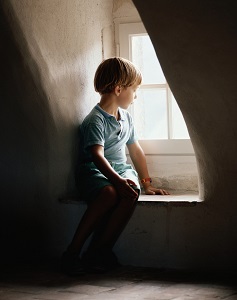Feral Children
 A feral child is a child who has been isolated from human contact, interfering with their development of human social skills.
A feral child is a child who has been isolated from human contact, interfering with their development of human social skills.
What is a Feral Child?
Many of the traits that people think of as quintessentially human, including language, social skills, and a desire to interact with others, are learned early in life. Feral children are children who miss out on even the most basic socialization; as such, they might never develop life skills typically needed to function independently in society. For this reason, some developmental psychologists have theorized that there is a critical period for human socialization beyond which a person cannot be properly socialized to the human behavior that is considered normal by society’s standards.
While the most popular conception of a feral child involves a child raised in the woods by wolves, children do not have to live in nature to become feral. Extreme abuse and neglect can also interfere with normal developmental processes. A child locked in a basement or left in a crib for weeks could become feral. Feral children tend to take on the characteristics of their environment. Thus a child who is raised in the wilderness might be more comfortable around animals, but a child who is abandoned in a basement might be afraid of any social interaction and any unenclosed space.
Famous Feral Children
The stories of feral children have been popular reading for centuries. For example, in Rudyard Kipling’s fictional story, The Jungle Book, Mowgli is a child raised by wolves and accustomed to interacting with animals. There have also been several highly publicized reports of actual feral children, including Genie, a child who was locked in her parents’ basement for years. Psychologists attempted to help Genie develop language and basic social skills, but she remained severely delayed for her entire life. In 2009, a five-year-old child in Russia was rescued by police after being raised as a pet. Rather than communicating with other people, she reportedly barked and hissed.
References:
- Blomfield, A. (2009, May 27). ‘Feral’ child barks and hisses after being raised as pet. The Telegraph. Retrieved from http://www.telegraph.co.uk/news/newstopics/howaboutthat/5393378/Feral-child-barks-and-hisses-after-being-raised-as-a-pet.html
- Keith, F. (n.d.). 10 modern cases of feral children. Listverse. Retrieved from http://listverse.com/2008/03/07/10-modern-cases-of-feral-children/
Last Updated: 01-17-2018
- 4 comments
- Leave a Comment
Brenda
September 24th, 2017 at 11:06 AMDoes any one know a medication that may slow them down
Wolf
February 6th, 2020 at 8:32 AMThere is no medication that would slow it down. I should know.. im one.
Garret
January 17th, 2022 at 11:51 PMSame fammo she’s our problem now
What do you mean slow them down what are you referencing
Leave a Comment
By commenting you acknowledge acceptance of GoodTherapy.org's Terms and Conditions of Use.
